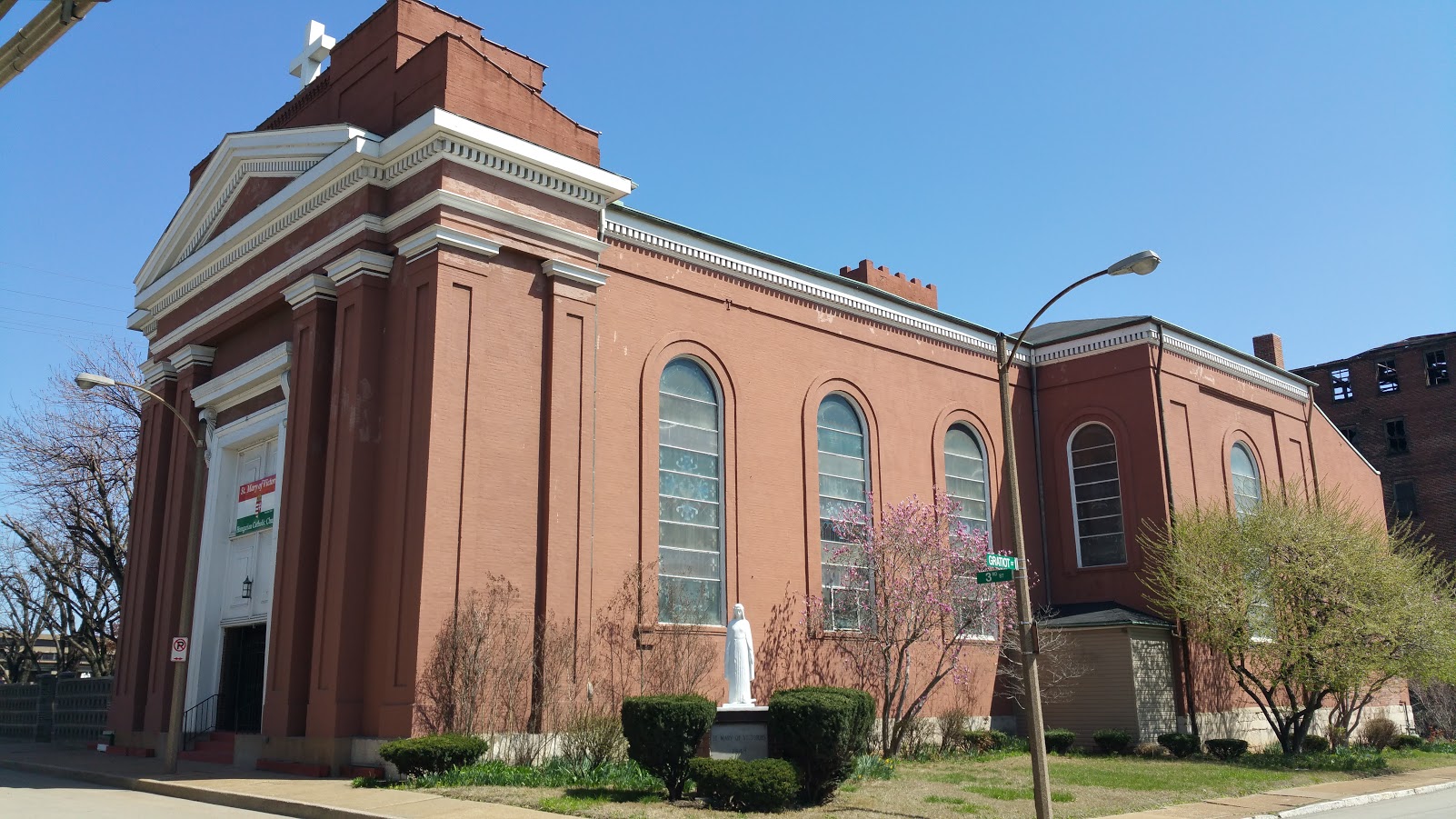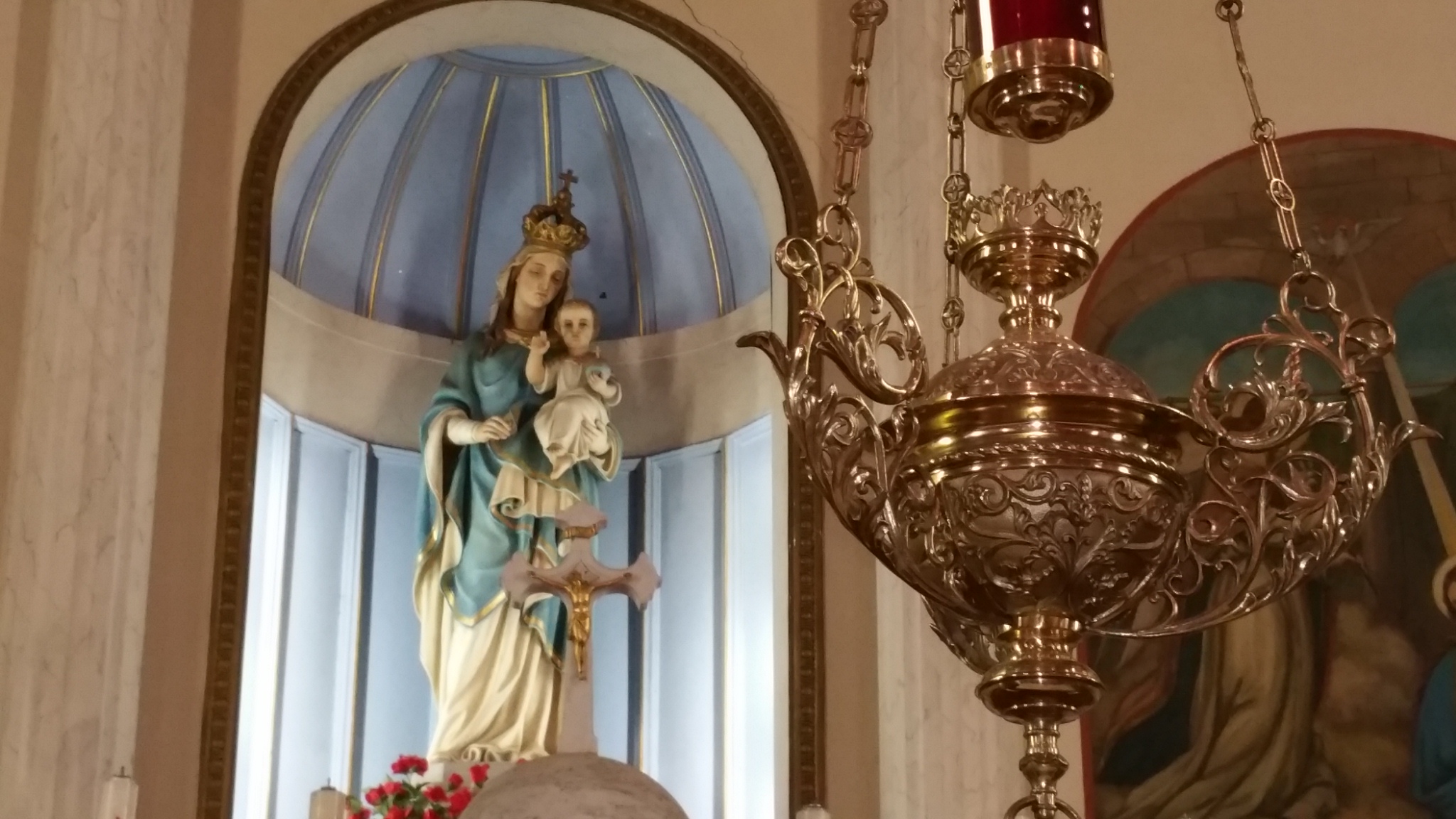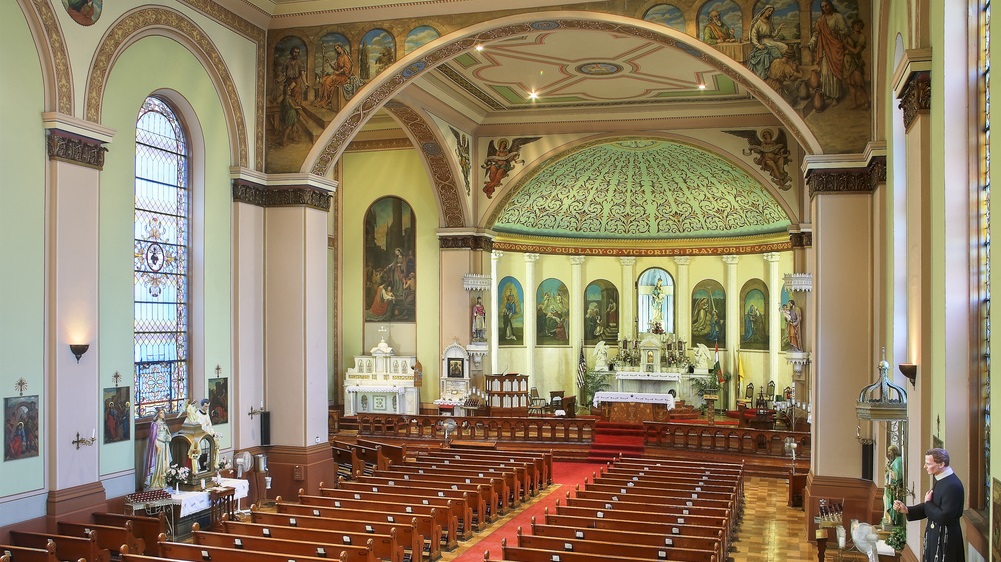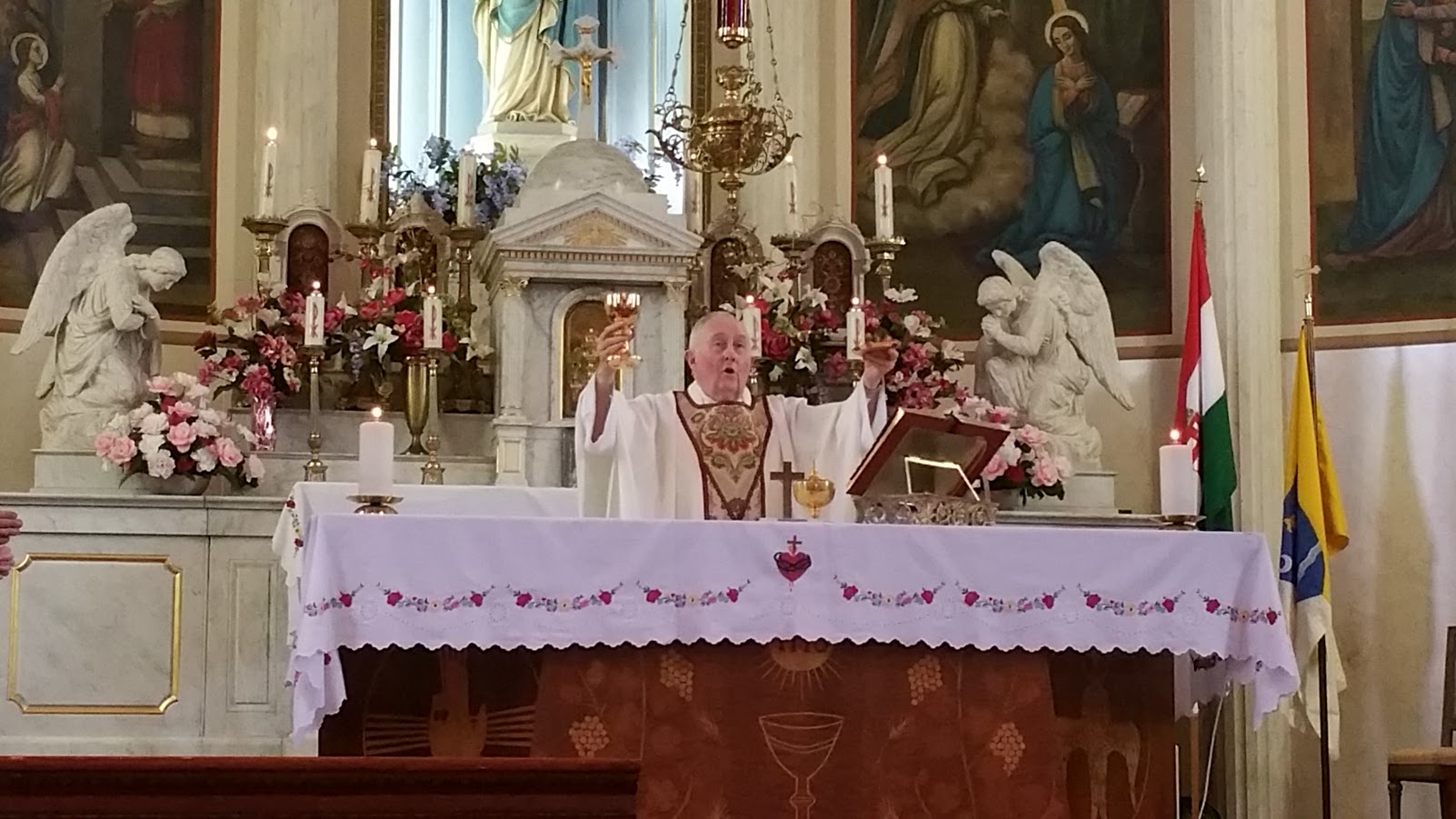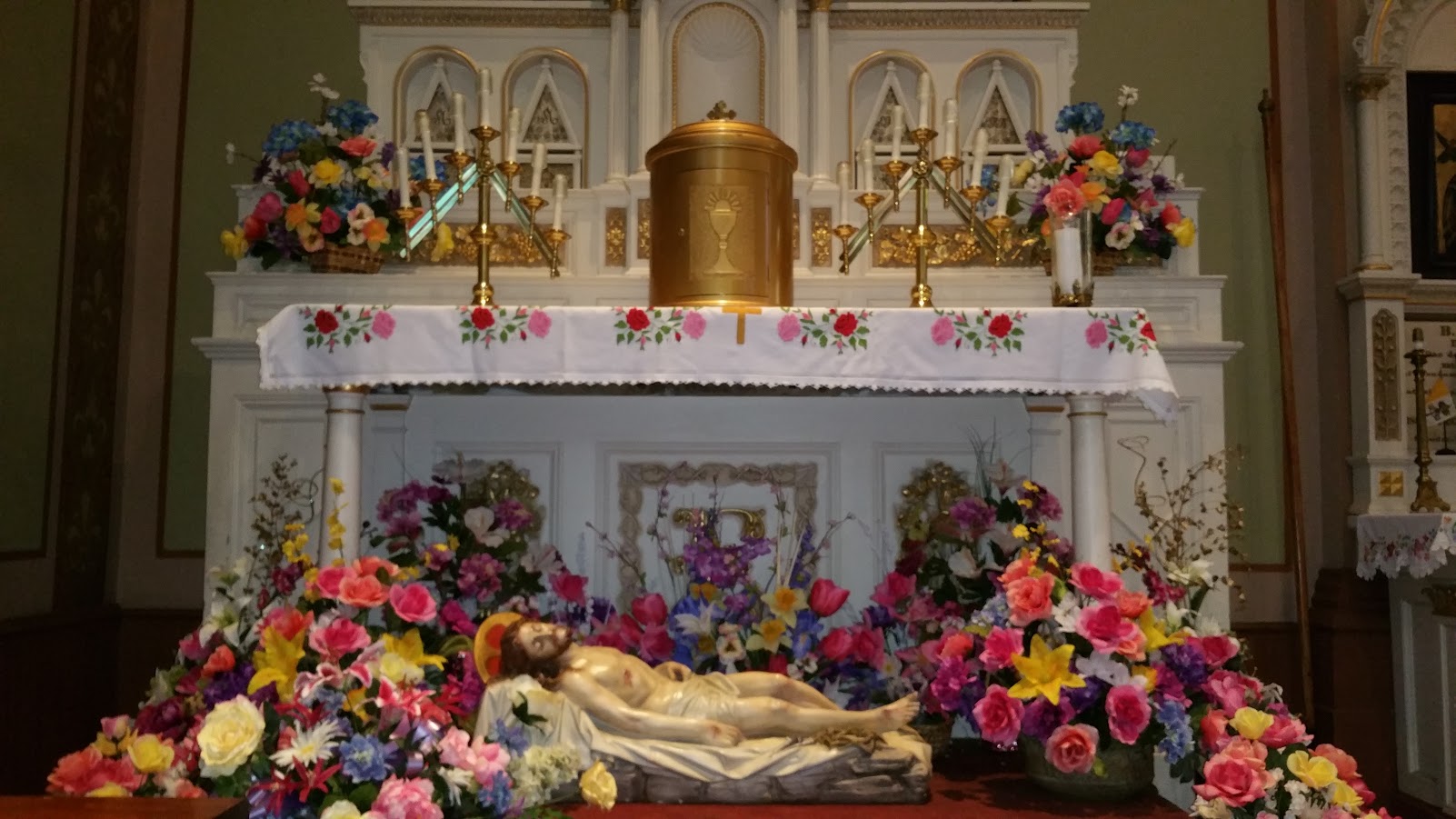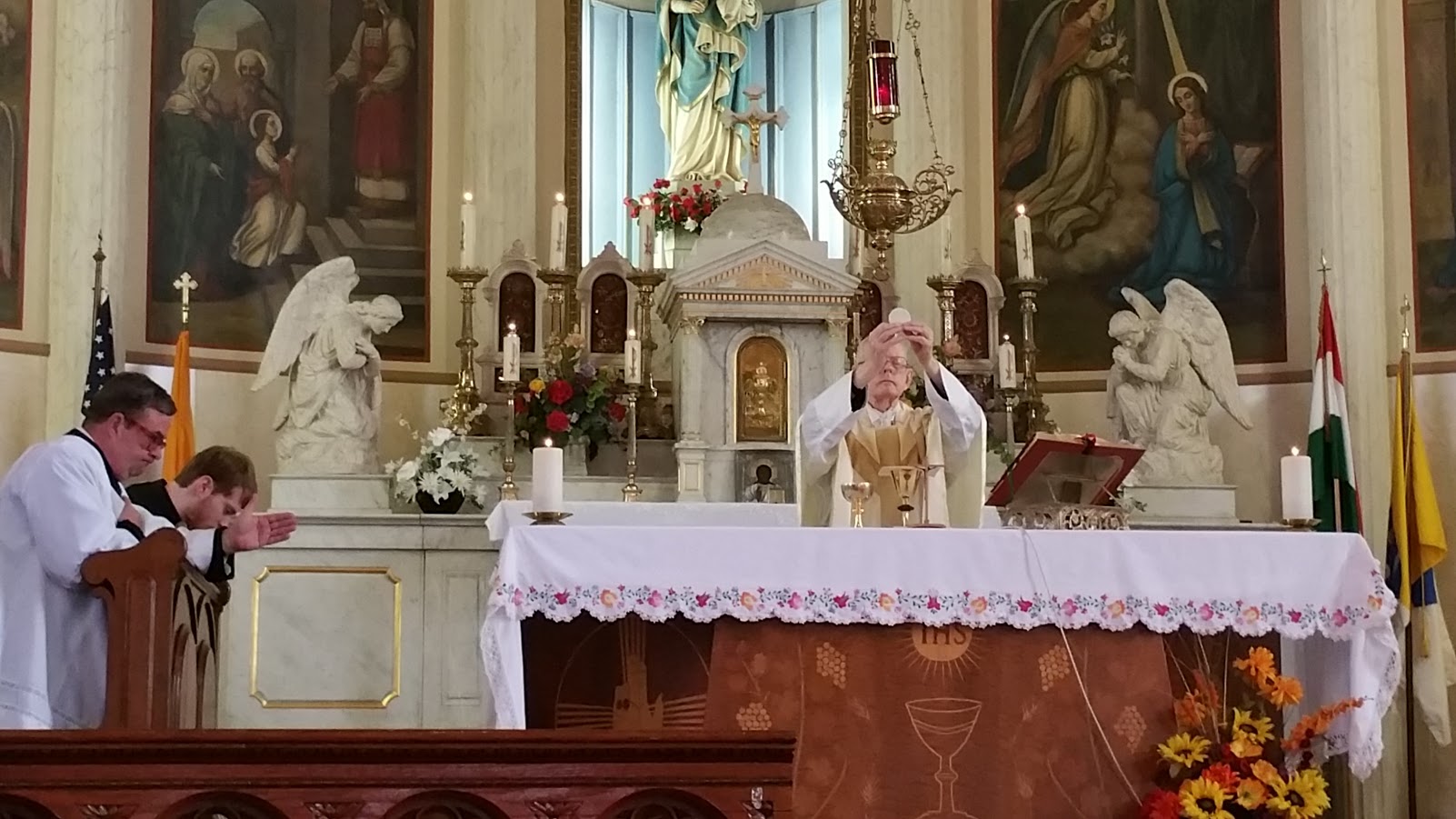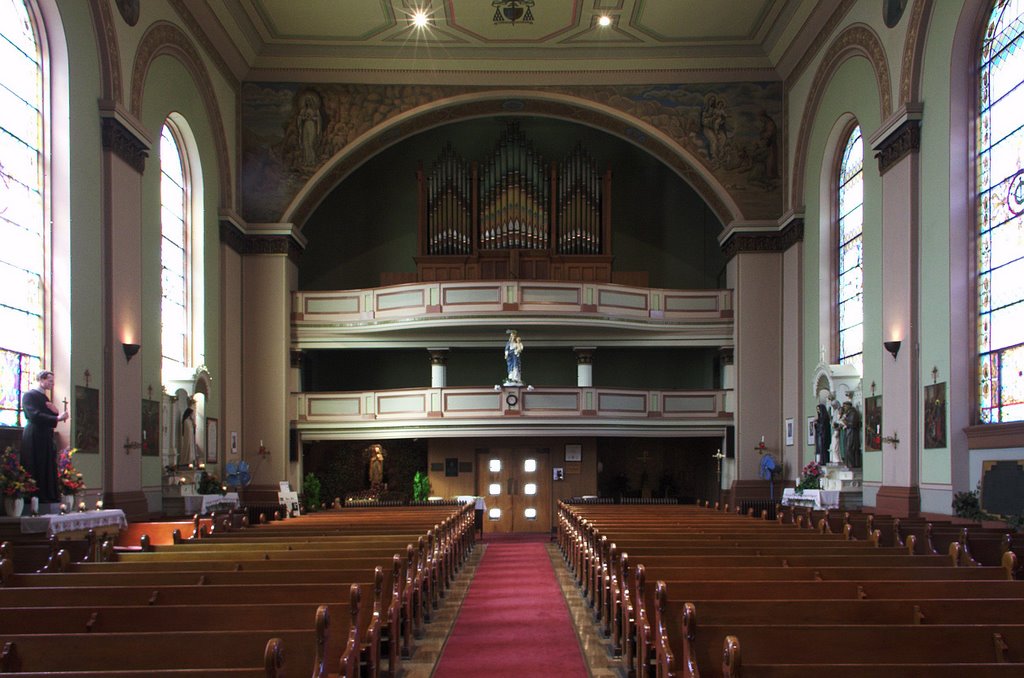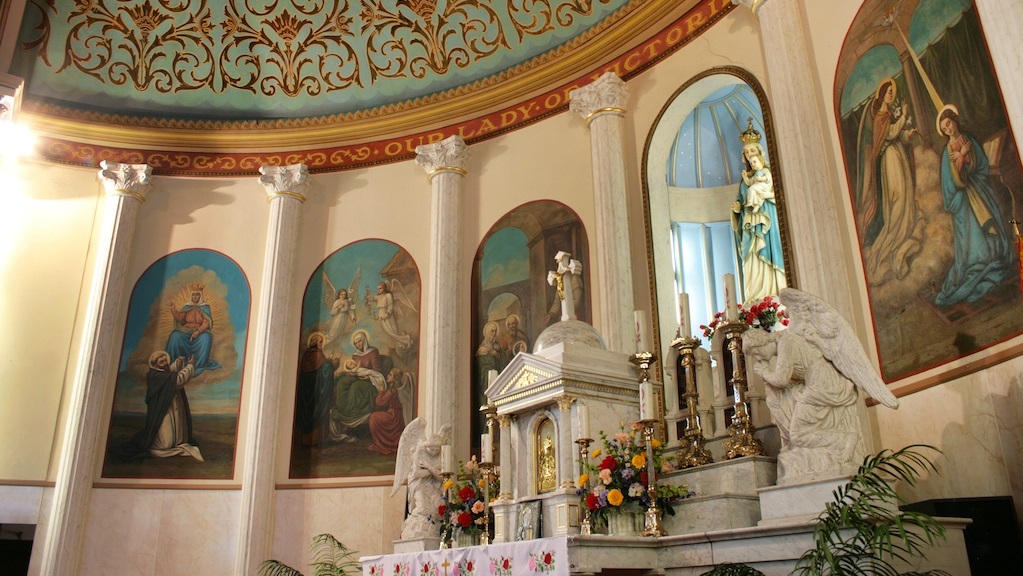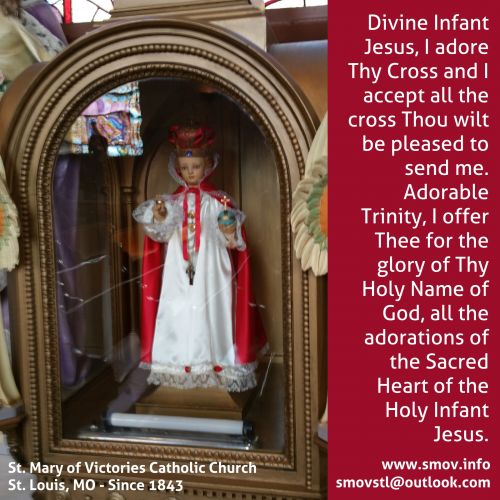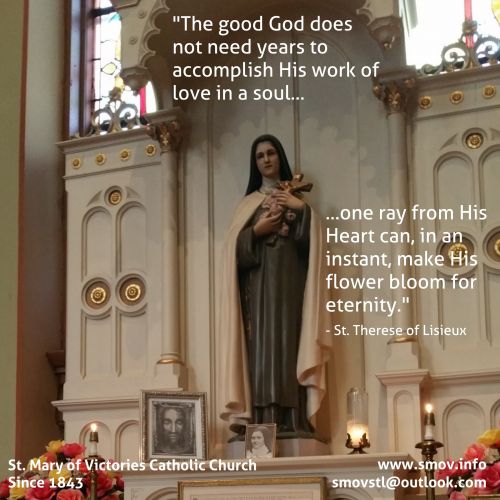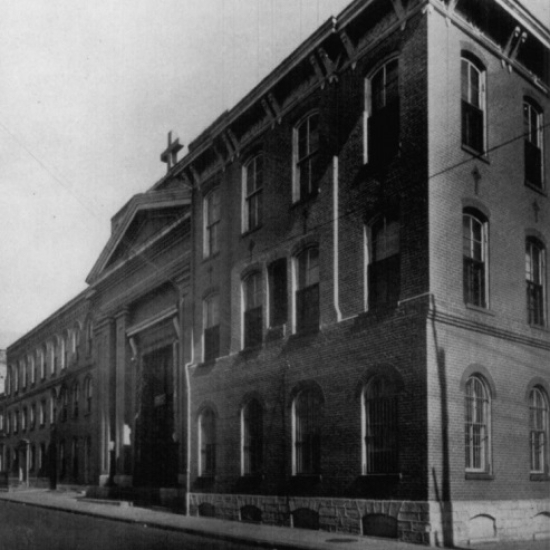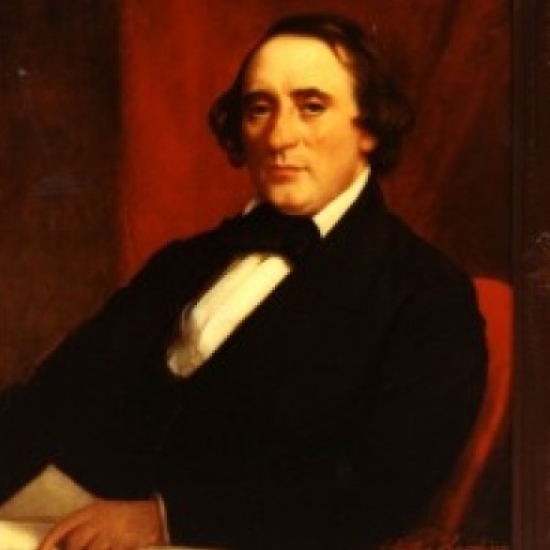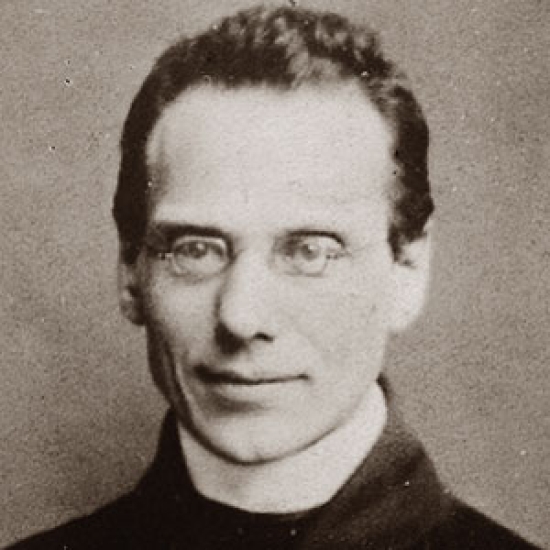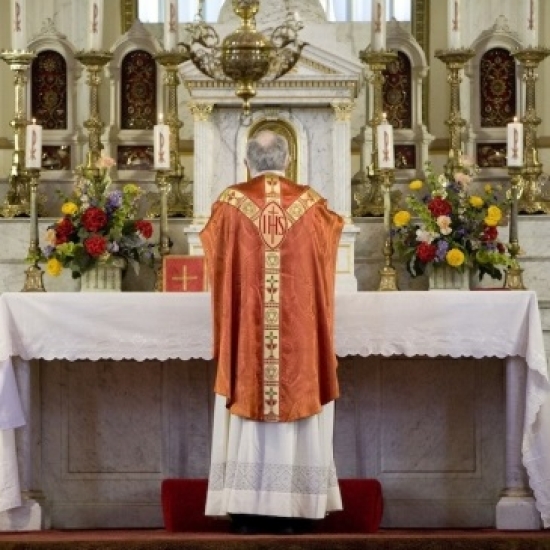2nd February 2016, Purification of the BVM (EF), Candlemas Day
Blessing of candles overview: The celebrant and ministers come from the sacristy to the table of candles to be blessed. The prayers for the blessing of candles are said, the candles are sprinkled thrice with holy water and thrice incensed. Then as they are distributed we sing the Lumen ad revelationem + Nunc Dimittis. Schola sing antiphon; all repeat. Schola sing verses of the Nunc Dimittis; all repeat antiphon after each verse and after GP. Verses are repeated as necessary prior to GP.
After distribution, sing antiphon Exsurge (begin on D as la) with its psalm verse.
Procession: The Priest then sings Oremus, and then adds: Flectamus genua. R. Levate. followed by an oration. R. Amen.
The celebrant then intones Procedamus in pace. We respond In nomine Christi. Amen., and the procession begins. We sing the antiphons Adorna and Obtulerunt. Mass follows the procession.
*******************
Music notes for distribution and procession:
Antiphon: Lumen ad revelationem gentium, et gloriam plebis tuae Israel. Begin on Bb (as do)
[A light to the revelation of the gentiles, and the glory of thy people Israel.]
The ceremony of blessing candles takes its theme from the final verse in the Canticle of Simeon in Luke 2: 29-31, called the Nunc dimittis from the first two words in the Latin text. We pray it every evening at Compline, the night prayer of the Divine Office. That final verse is used here as the opening antiphon, and repeated after each of the other verses of the canticle like a rondo.
The two parts of this vigorous antiphon are balanced. In the second half f a serves as an introduction for the accent on gloriam = Lumen. The first half closes with a g a g f, the second half with a a b a g.
1. Nunc dimittis servum tuum, Domine * secundum verbum tuum in pace.
2. Quia viderunt oculi mei * salutare tuum
3. Quod parasti * ante faciem omnium populorum
4. Gloria Patri. (The intonation is omitted in verse 3 on account of the brevity of the text.)
[Now, Lord, dismiss Your servant in peace, according to Your word. For my eyes have seen Your salvation which You have prepared before the face of all peoples.]
We might not expect the final cadence G (c b c a g) here, since in the Antiphonale the cadence C (c a c d c) is used for this antiphon (the fourth at Lauds for February 2) and most often when the antiphon begins on c. The present feast is a connecting link between Epiphany and Easter. Today Christ, the Light, enters the Temple, where at a future time He will solemnly proclaim: I am the Light of the world. Mankind, however, prefers darkness to the light and is bent upon extinguishing it in its heart. Christ became a sign unto many, but was contradicted; at the crucifixion the Light of the world was overshadowed by darkness. On Holy Saturday, however, we hear the triumphant cry Lumen Christi, followed by a grateful Deo gratias.
Antiphon: Exsurge Domine (Ps. 43: 26)
Exsurge, Domine, adjuva nos: et libera nos propter nomen tuum.
Ps. Deus, auribus nostris audivimus: * patres nostri annuntiaverunt nobis.
[Rise up, Lord, help us. Free us on account of your name. Ps. God, we have heard with our ears, our fathers have announced to us.]
The first notes of this antiphon are well known to us from the Per omnia saecula. Similar melodic treatment is given to adjuva nos and the definitive libera nos: the e following the former acts as an impellent for the latter. The present Exsurge is devoid of the stormy excitement and the feeling of abandonment by God depicted in the hauntingly beautiful Introit of Sexagesima. True, today's chant is impressive—the repetition of the same formula emphasizes this—but it is simpler, more ardent, more confident. It is also sung on Rogation Days immediately before the procession.
Antiphon: Adorna thalamum tuum, (begin on D as fa)
1. Adorna thalamum tuum, Sion et suscipe Regem Christum-.
2. amplectere Mariam, quae est caelestis porta:
3. ipsa enim portat Regem gloriae novi luminis: subsistit Virgo, adducens manibus Filium ante luciferum genitum:
4. quem accipiens Simeon in ulnas suas praedicavit populis Dominum eum esse vitae et mortis, et salvatorem mundi.
[O Daughter of Sion, adorn thy bridal chamber, and welcome Christ the King: greet Mary with loving embrace, for she, who is the very gate of heaven, brings you the glorious King of the new light. Though in her arms she bears a Son begotten before the day star, yet ever she remains a pure virgin. Hers was the Child whom Simeon, taking up into his arms, declared unto all peoples to be the Lord of life and death, the Saviour of the world.]
Hers was the Child whom Simeon, taking up into his arms, declared unto all peoples to be the Lord of life and death, the Saviour of the world. Sion, in the first verse, refers to the Church. In the first two phrases the second half repeats the melody of the first half. In the second verse the melody is inspired by the thought of the "King of the new light," and thenceforward it becomes brighter. Special emphasis is given the word eum, for He is the Lord. The whole produces the effect of a royal hymn, a festive echo of Christmastide, which delighted in singing of Christ the King. The identical form of the motif over Sion recurs four times; that over gloriae three times; that of novi luminis over (ad)-ducens manibus, and again with a slight change over Dominum eum esse. Some scholars claim these chants are of Greek origin; others disagree.
Responsory: Obtulerunt, (begin on C as la)
Obtulerunt pro eo Domino par turturum, aut duos pullos columbarum: *Sicut scriptum est in lege Domini.
Postquam impleti sunt dies purgationis Mariae, secundum legem Moysi, tulerunt Jesum in Jerusalem, ut sisterent eum Domino.
*Sicut scriptum est. *Gloria Patri.
[They offered for Him to the Lord a pair of turtledoves, or two young pigeons: * As it is written in the law of the Lord.
After the days of the purification of Mary, according to the law of Moses, were fulfilled, they carried Jesus to Jerusalem, to present Him to the Lord.
*As it is written. Glory be to the Father.]
The division of syllables eum Domino and (Spi)-ritui Sancto is readily recognized. The construction is identical with that of the responsories Emendemus on Ash Wednesday and Ingrediente on Palm Sunday. The melody is closely related to that of the former. Compare also the Response In monte Oliveti of Palm Sunday.
**************
Music for the Mass:
Introit:, Suscepimus, begin on B♭ (as do), in Gregorian Missal, p. 492.
Gradual: Suscepimus, begin on D (as re)
Tract: Nunc dimittis, begin on D (as re)
Offertory: Diffusa est, begin on D (as re)
Communion: Responsum accepit, begin on D (as re)
Recessional: Ave Regina caelorum, V2H, p. 368,begin on D
Mass X, Ambrosian Gloria, Credo I.
The Introit antiphon has three phrases. The first and second we'll break into two, but we need to keep intact the melodic link of 2b and 3. (Cf. notes below.)
1. (a) Suscepimus, Deus, misericordiam tuam
(b) in medio templi tui:
2. (a) secundum nomen tuum, Deus
(b) ita et laus tua in fines terrae:
3. justitia plena est dextera tua
Saulnier, among others, has noted that when Mode 1 chants linger on to high do as a recitation note, as we have here, especially in the third phrase, it becomes triumphant, similar to mode 5. Certainly we have that sense of triumph here, when we acknowledge that we receive the mercy of God incarnate in the Temple. The sacred name, the awe-some praise, and the righteousness of God are become flesh and blood that will flow from the Temple to the ends of the earth. Our echo of that praise is the instrument God uses to promote His righteousness in our own world now.
At first glance our attention is attracted by the extended intervals at the beginning of the second phrase. It would seem as though the singer wished to clarify our notion of the majestic essence of God. The entire middle phrase overtops the first and third phrases rather prominently. The cadence over fines terrae, which forms the close of the first phrase as well, imparts to both a well-rounded finish.
In the first phrase a is the predominant note, c being sounded only in passing. The second phrase is dominated by c, the third by f. Briefly, we might say that the first phrase is characterized by f-a, the second by a-c, the third by d-f. An apparently insignificant but important note forms the transition to the third phrase. Despite an indicated major pause here, the note effecting the transition makes for a short rest only. Einsiedeln 121 inserts at this place "st" (statim, at once) which in modern music corresponds to an attaca subito. The third phrase should be rendered in broad, full tones, every word being given due prominence.
Two special remarks about the rhythm:
a) On the salicus of (Sus-)ce(-pimus) we will observe the vertical episema on the second note, as indicated by the manuscripts. That means a slight hold on the second note (not the length of a full note, however.) And we will sing the ti as ti-b, as printed in the Gregorian Missal.
b) In the modern print editions of the chant, a curved line under the text tells us that the composer wants the singers to keep together the words and ideas in the phrases before and after the point where this line occurs, ignoring the usual effect of a full bar line. So we do not break the flow of the chant at that point, but smoothly put a renewed emphasis on the entry into the phrase following the line. Einsiedeln 121 and some other manuscripts insert at this point 'st' (=statim, at once) which in modern music corresponds to an attaca subito. As always, singing long phrases means we'll have to take turns stealing a breath at other points—just not all at the same time, please. As we've noted before, this antiphon is among the most beloved of Mass chants, and volumes of commentary have grown up around it.
The Gradual has two phrases in the corpus and two in the verse:
1. Suscepimus, Deus, misericordiam tuam in medio templi tui:
2. secundum nomen tuum, Deus, ita et laus tua in fines terrae.
Verse
1. Sicut audivimus, ita et vidimus
2. in civitate Dei nostri, in monte sancto ejus.
This corpus repeats the text of the first two phrases of the Introit and bears some melodic similarity to it: (tu)-am tem-(pli), secundum no-(men). In general, this part is characterized by solemn serenity. The melody of the verse will feel familiar from singing the Christus factus est. The florid melisma over illum of the latter is unhappily lacking here. The prophecy of Malachi (Lesson of the feast) has been realized, and ‘we have received Your mercy, O God.’ In His holy temple we behold Him, the Angel of the covenant, the Angel of the great counsel (Introit of the third Mass of Christmas). And this is the house of God, in which we render Him homage and offer Him our worship of adoration.
The Tract is from the text of the Nunc dimittis, as above, adapted to standard Mode 8 melodic elements.
The Offertory has three phrases:
1. Diffusa est gratia in labiis tuis
2. propterea benedixit te Deus in aeternum,
3. [endif]et in saeculum saeculi.
At the beginning of the Christmas season we referred these words to the charm and beauty of the divine Child (see Gradual of the Sunday after Christmas). Today, at the close of the Christmas season, these same words glorify the Mother of the divine Infant. It has ever been the wish of the artist to portray the exterior charm of the blessed Mother, but never has the ideal conception of her been successfully materialized. To comprehend fully the beauty of her soul one would needs require eyes of faith and a soul as pure and rich in graces as Mary's. The Archangel Gabriel at first sight of her exclaims: Ave, gratia plena—"Hail, full of grace." This angelic salutation is developed and paraphrased in the first phrase of the Offertory. The term plena corresponds to diffusa. Would that we might sing this melody with the reverence and glowing love of the Archangel! Following the low-pitched and rather reserved introduction, gratia continues in a bright, ascending melody. The climacus here and over Iabi-(is) later must be sung crescendo. Tuis modulates into a full step below the tonic. The second phrase, which is a development of the Archangel Gabriel's benedicta tu, terminates in the same manner. Following the ascending intervals of a fourth in the first phrase we have here descending intervals of a fourth. The melody c d cc g a is re-echoed in the following g b aa g g a. Deus should be given the expression it demands. The word aeternum is accorded particular splendor. The preceding torculi c d c reach their climax in d e c. The final cadence should be sung broadly. In the third and final phrase the singer, dwelling emphatically on high c, would be describing for us eternity, endless in extent. As in the second phrase, the neumes here should be given precedence over the bistropha and tristropha. This finale is well rounded off, having a conclusion similar to that of the first two phrases. The Lessons of some feasts of the Blessed Virgin ascribe to her the words: ‘I shall not cease in all eternity.’ And truly, she will be blessed for all eternity and will ever be the dispenser, the mediatrix of blessings. She will never cease to console, to succor, and to heal. The present feast invests the person of the Mother of God with a peculiar charm. She appears as if transfigured by sorrow. She realizes what the offering of her Son in the temple presages, for she hears there the ominous words: ‘And your own soul a sword shall pierce.’ And additional beauty and charm is imparted to her soul by the royal response: Fiat—Be it done. As the Mother of Sorrows she becomes the fountainhead of blessing and consolation for mankind. In the oldest manuscripts this melody is noted on the feast of St. Agnes (January 21). The tempo should be bright, the rendition light and airy.
The Communion antiphon is a single phrase, but we'll break it into two parts.
(a) Responsum accepit Simeon a Spiritu Sancto,
(b) non visurum se mortem, nisi videret Christum Domini.
As is often the case when the text comes from the Gospels (Luke here), the melody is a narrative (appropriately, in declarative Mode 8) and is defined by the word-accents of the text. The antiphon gives us the reason for Simeon's proclaiming of the Nunc dimittis, the canticle we sang during the procession—a rare instance of singing that canticle in Mode 8—linking us to this antiphon as well. So we end as we began: God's promise of salvation is fulfilled in the person of Christ, the light of the world.
N.B. Since we just sang the Nunc dimittis during the procession, we'll sing a verses of Psalm 47 at Communion. So start with the psalm verse beginning Magnus Dominus . . ., which is marked as v. 4 in the CMAA Communio book.
